How To Use Virtual Modelling Technologies For Smart Tyres
- By TT News
- March 04, 2025
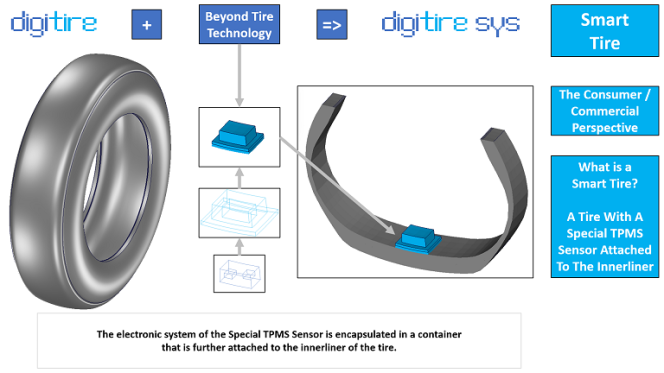
For more than 30 years, Haluk Kizilay has built an impressive career that spans everything from tyre design and development to strategic planning, marketing and business development, both in Turkey and overseas.
He received BSc in mechanical engineering as well as another degree in Business Management (BBA) in Turkey.
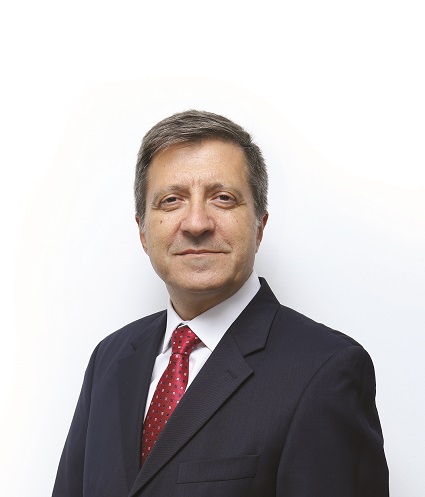 At Brisa, Bridgestone Turkey, Haluk supported executive and functional level of tyre design, material development, production, field evaluation and management. He also engaged in strategic plan development, competitive intelligence, OEM programmes and benchmarking.
At Brisa, Bridgestone Turkey, Haluk supported executive and functional level of tyre design, material development, production, field evaluation and management. He also engaged in strategic plan development, competitive intelligence, OEM programmes and benchmarking.
In 2011, Haluk moved on to become an ‘R&D Engineering Manager’ in Cooper Tire & Rubber. He took wide-range responsibility for Truck & Bus product development as well as Field Engineering & Business Development.
In addition to design direction at Cooper, he also participated in Product Planning and Global Technology Development and Merger and Acquisition activities in China and Europe.
Haluk is one of the registered researchers of TUBITAK – The Scientific & Technological Research Council of Turkey – and he is also one of the authorised judges of EU Horizon work programme.
In 2019, he established his own consulting firm called ‘TICTire Industry Consulting’ to serve the tyre industry globally.
The global tyre market has been expanding annually at a rate of 2 to 10 percent, depending on the region. This growth is driven by global economic expansion, increased mobility demands and diversification, new business models and other factors. At the same time, the performance requirements for tyres have become more stringent than ever. As a result, the tyre industry is increasingly focused on advanced technologies, including innovative, light and green materials, enhanced modelling and testing methods, embedded systems, environmental sustainability and the development of smart tyres.
To meet these demands, the tyre industry must elevate its New Product Development (NPD) processes by intensifying research and development efforts. In the highly competitive market of the future, and in the new CASE mobility context (which stands for Connected Autonomous Shared and Electric vehicles), the new tyre technology and knowledge will be more critical than ever before.
One significant trend in NPD is the drive to reduce development time through the use of modern simulation and modelling techniques. At TIC-Tyre Industry Consulting, in partnership with Autoadmin Consulting, we emphasise the philosophy of ‘speed to market with the right modelling solutions and innovation’. Virtual modelling technologies are central to this approach, enabling companies to launch world-class products faster and more cost-effectively by eliminating the trial-and-error physical development approaches.
The role of virtual modelling technologies in smart tyre development
Virtual modelling technologies are indispensable for understanding how the various components of a tyre interact. By leveraging modelling and simulation, tyre manufacturers can predict the full range of potential outcomes, including complex and novel testing scenarios beyond what traditional mental models can anticipate.
As a critical vehicle safety component, the tyre significantly impacts overall vehicle performance and has now new ‘attributes’ like providing various data about the tyre status in real time. Therefore, designing high-quality, high-performance tyres require not only an understanding of their intrinsic properties – such as tread pattern, carcass structure, materials characteristics – but also the external running conditions like vehicle load and speed, wheel torque and road surface. Virtual tyre models, built with the FEA (finite element analysis) method, provide a comprehensive framework for evaluating and understanding the impact of these variables, particularly in the case of smart tyres applications.
Here are some examples of how tyre FEA simulation and tools can unlock the potential of virtual modelling technology:
• Component and system development: Creating models for tyre carcasses, plies, belts, reinforcements and tread patterns, including beyond tyre components (such as RFID or TMS sensors) for structural analysis.
• Predictions of footprint and stiffness characteristics: Simulating static or quasi-static footprint behaviour under normal, lateral and torsional forces.
• Predictions of force and moments: Simulating steady state rolling during braking, acceleration and cornering.
• NVH applications: Evaluating tyre cavity profile, tread block design, void areas, non-skid depth, groove angles and pitch sequencing.
• Emerging technologies applications: Addressing new tyre engineering challenges like traceable, silent, studded tyres with the integration of TMS or RFID sensors, innerliner foams or tread studs and EV-specific reinforcements requirements for high load capacity tyres.
The game changer: Adopting a 3D modelling approach first to tyre design
The tyre industry must fully transition to a 3D first mindset when designing products, just as other industries – such as automotive and aerospace – have done for parts and assemblies. Today, every component of a vehicle, whether for ICE vehicles or EVs, is first modelled in 3D space. From these models, 2D sketches, assembly and execution drawings are derived using cutting, cross-sectioning and projection techniques for manufacturing plans.
By adopting this approach, tyre designers can address the complexities of designing emerging technologies for smart tyre development, such as various sensors embedded in or glued to the tyre. Likewise for foam in tyre (FIT) and non-pneumatic tyres (NPT) technologies. This shift from traditional 2D design thinking to a comprehensive 3D space representation will enable the industry to better meet the challenges of smart tyre innovation.
Advancing FEA for proactive tyre development
To achieve higher levels of ROI in FEA simulations and tools, the industry must integrate the latest advancements in FEA technology. These efforts should be proactive, conducted well before manufacturing begins. The outdated 2D to 3D model creation approaches, involving the solver in the model creation stage, no longer suffices, besides having many limitations. Given the increasing complexity of tyre design and the massive data exploration required for simulations and testing various load cases, automations in post-processing should also be considered.
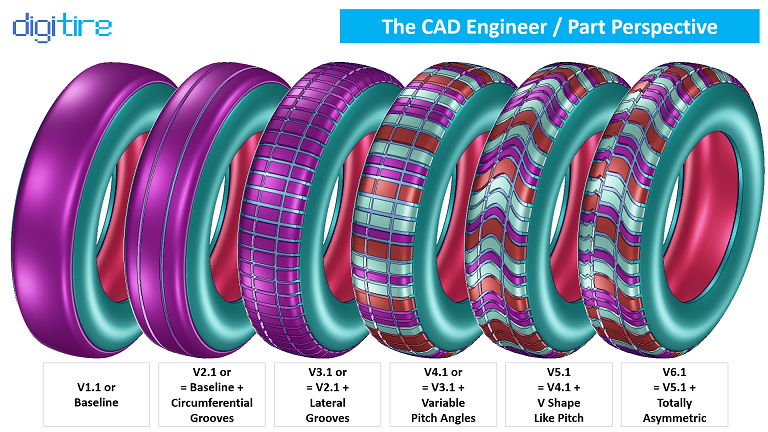
To succeed in this environment, manufacturers must rely on expert knowledge. Virtual modelling technologies provide the tools needed to address these challenges and seize new opportunities, empowering the tyre industry to lead in innovation and performance.
Support from TIC-Tyre Industry Consulting and Autoadmin Consulting
At TIC-Tyre Industry Consulting and Autoadmin Consulting, our Subject Matter Experts (SMEs) bring extensive hands-on experience in the topics discussed above. We are ready to support R&D activities with tailored technical solutions designed to address unique challenges. We pride ourselves on adhering to the highest professional and ethical standards, a hallmark of our work for many years.
In addition to our consulting services, we offer Simulation and Modelling Technical Courses. These programmes are designed to equip your workforce with the skills, mindset and competencies needed to thrive in today’s competitive environment. Our expert trainers guide participants through an engaging learning journey, incorporating workshops, real-world case studies and cutting-edge educational technologies.
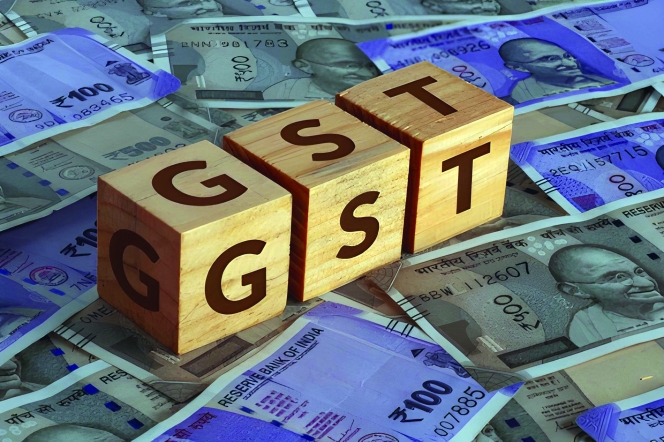
The rollout of GST 2.0 marks a defining moment in India’s economic journey – a reform that may well prove even more consequential than the original introduction of the Goods and Services Tax. Especially for a sector like tyres, the recent reduction in (GST) on tyres is far more than just a change in numbers. It is a transformative step that touches every wheel turning on India’s roads – from a farmer’s tractor to a trucker’s long-haul trailer and from a commuter’s scooter to a construction vehicle powering the nation’s infrastructure.
For years, tyres were taxed at 28 percent – the highest GST slab, clubbed with luxury and demerit goods. This categorisation never truly reflected the essential role tyres play in our everyday lives. Tyres are not a luxury. They are a fundamental enabler of mobility, supporting the movement of people and goods across cities, towns and villages. By bringing GST rates on tyres down to a more rational level, the government has addressed a long-standing anomaly and set the stage for widespread benefits across the economy.
The most visible impact of this move will be felt on the ground – literally. Lower GST means more affordable tyres for all users. Especially for transporters and fleet operators, tyres account for a significant chunk of vehicle running costs. A reduction in tax translates into lower replacement costs, freeing up working capital and improving operational margins. Farmers, small traders, delivery personnel, service providers, transporters – every segment that relies on mobility will feel this relief.
India has been working hard to bring down logistics costs, which are believed to be about 13–14 percent of GDP – much higher than global benchmarks. Tyres have a direct bearing on vehicle operating efficiency, fuel consumption and maintenance schedules. When tyres become more affordable, operators can replace tyres on time, and run vehicles more efficiently.
This naturally leads to lower logistics costs. Reduced logistics costs ripple across the value chain, helping industries move goods faster and at lower cost. This aligns perfectly with India’s ambition to become a more globally competitive manufacturing and trading hub.
Tyre industry’s story is not just urban – it’s deeply rural as well. Tractor tyres, power tiller tyres and tyres for animal-drawn vehicles are integral to the agricultural economy. A reduction in GST brings meaningful relief to farmers and small cultivators who rely on these tyres for their daily operations. By easing this cost, the government has extended direct support to rural mobility and agricultural productivity – an often underappreciated but critical outcome of this reform.
One of the most powerful yet often overlooked impacts of this decision lies in road safety. Worn-out tyres are a major cause of road accidents, particularly on highways. High replacement costs often lead to tyres being used well past their safe life.
With lower GST making new tyres more accessible, both individual motorists and commercial fleet owners are more likely to replace tyres on time, keeping vehicles safer and reducing accident risks. This complements the government’s broader road safety agenda, making highways not just faster but safer for everyone.
For the Indian tyre industry, which is one of the largest in the world, this reform is a game changer. It creates a more balanced tax structure, supports better cash flow, improves compliance and strengthens the competitiveness of domestic manufacturers. It will also encourage investment and capacity expansion, enabling the industry to serve growing domestic demand and tap export opportunities more effectively.
The GST reduction on tyres is a strategic, forward-looking policy decision that will benefit the entire mobility ecosystem. It acknowledges the essential role tyres play – not just as a product, but as a critical enabler of transportation, logistics, rural livelihoods and road safety.
As this reform takes root, its positive impact will be felt by consumers, businesses, farmers and industries alike. The tyre industry, represented by ATMA, welcomes this move wholeheartedly and remains committed to working alongside the government to strengthen India’s journey towards affordable, efficient and safe mobility for all.
The author is Director General of the New Delhi-based tyre industry association, Automotive Tyre Manufacturers’ Association (ATMA).The views expressed here are personal.
WACKER Secures Gold Medal In EcoVadis Sustainability Rating
- By TT News
- December 18, 2025
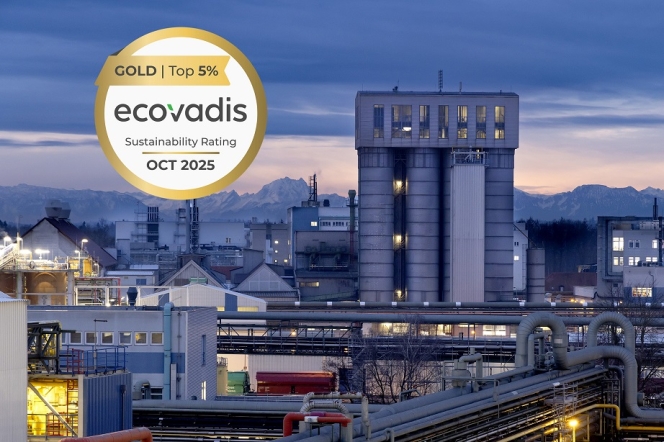
WACKER has earned the 2025 Gold Medal from the independent rating agency EcoVadis, marking its continued recognition for sustainable practices and responsible corporate governance. This distinction places the company within the top five percent of all businesses assessed by EcoVadis (over 1,000 companies globally). WACKER's overall score improved from 77 points (in 2024) to 79 points, driven largely by enhanced reporting and concrete actions focused on Scope 3 emissions and ethical standards.
The EcoVadis assessment measures the quality of a company’s sustainability management through a methodology grounded in international frameworks like the Global Reporting Initiative, the UN Global Compact and ISO 26000. Performance is scored from 0 to 100 across four core areas: environment, labour and human rights, ethics and sustainable procurement, using 21 specific indicators.
In line with its commitment, WACKER provides its EcoVadis evaluation to customers as a standardised and credible validation of its sustainability efforts. The company has also defined ambitious climate targets, aiming to halve its absolute greenhouse gas emissions by 2030 relative to 2020 levels. Progress is already evident, with a 30 percent reduction achieved as of 2024. Looking further ahead, WACKER strives to reach net-zero emissions across its operations by the year 2045.
Peter Gigler, Head of Corporate ESG, WACKER, said, “The result confirms our initiatives in many key areas. It provides our customers with invaluable proof.”
Craig Borman Appointed As Head Of OTR At BKT USA
- By TT News
- December 18, 2025
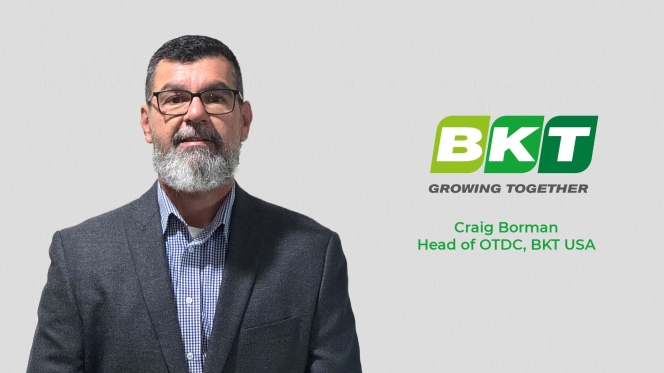
Balkrishna Industries Ltd (BKT Tires), a global leader in off-highway tyre manufacturing, has appointed Craig Borman as Head of OTR at BKT USA. The appointment is in line with BKT’s long-term strategy through 2030.
Borman brings with him 20 years of experience across off-road equipment, tyres and rubber tracks. He will play a key role in leading BKT USA's OTR team and expanding the company's presence in this market while increasing awareness of the value and dependability of BKT's range of products.
Borman said, “I’m extremely excited to join the BKT family and to build off the successes that this team has already achieved. I look forward to engaging with our partners, determining how we can accelerate our mutual growth and working towards achieving BKT’s vision of being a recognised leader in the OTR segment.”
Christian Kötz To Succeed Nikolai Setzer As Continental CEO In Planned Handover
- By TT News
- December 18, 2025
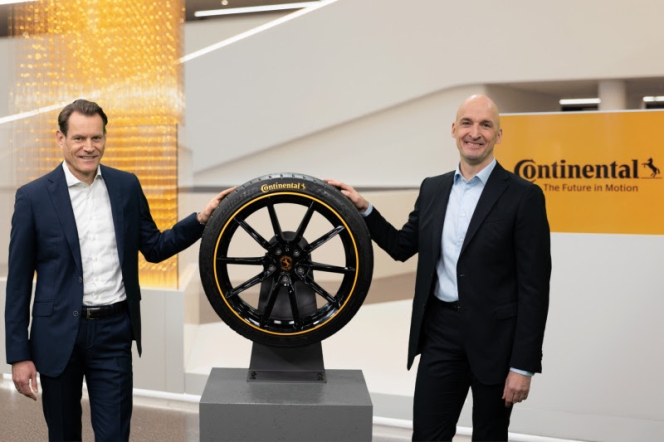
The Supervisory Board of Continental AG confirmed a significant leadership transition during its meeting on 17 December 2025. Christian Kötz will be appointed as the new Chairman of the Executive Board and Chief Executive Officer, effective 1 January 2026. He succeeds Nikolai Setzer, who will step down from the Executive Board on 31 December 2025. Setzer's departure follows more than 16 years as a board member, including the last five years in the CEO role, and occurs by mutual agreement as the company reaches a pivotal point in its strategic evolution.
This planned change in leadership aligns with the substantial progress Continental has made in its transformation into a pure-play tyre company. Major structural milestones have been achieved, including the spin-off of Aumovio and the signing of an agreement to sell the Original Equipment Solutions (OESL) business area. Regarding the planned 2026 sale of ContiTech, internal preparations are largely complete. The market outreach phase has concluded, and a structured sales process is scheduled to begin in January 2026, setting the stage for the final step in the corporate realignment.
Kötz’s extensive background within the tyre business, dating back to 1996, positions him to lead this final phase. A member of the Executive Board since 2019, his previous leadership roles within the Tires group sector included responsibility for the passenger car tyre replacement business in the EMEA region, the original equipment and commercial vehicle tyre business units and global research and development for passenger car tyres. His many years of trusted collaboration with Nikolai Setzer are expected to ensure continuity during the transition.
Kötz will lead an Executive Board comprising several key figures. Alongside him and Philip Nelles, who has headed the ContiTech group sector since 2021, are Roland Welzbacher and Ulrike Hintze. Welzbacher joined the board in August 2025 and assumed the role of Chief Financial Officer on 1 October 2025. Hintze was appointed to the board on 1 July 2025, serving as Chief Human Resources Officer and Director of Labour Relations. This board will be responsible for driving the tyre business forward, completing the corporate realignment and, following the sale of ContiTech, integrating the remaining group functions into the tyre organisation.
Wolfgang Reitzle, Chairman of Continental’s Supervisory Board, said, “Nikolai Setzer has been instrumental in shaping Continental, realigning the organisation and paving the way for three strong, independent companies. For this, he has the thanks of the entire Supervisory Board as well as my personal gratitude. With this handover, we are consolidating responsibility for the tyre business, the realignment and the remaining tasks of the group functions in one role. Christian Kötz is one of the most distinguished managers in the global tyre industry. With his extensive experience and passion for Continental, we firmly believe he is the right choice to lead the company successfully into the future.”
Setzer said, “In recent years, we have succeeded in transforming a diverse portfolio of businesses into three strong, independent champions. After 28 years at Continental, now is the right time for me to hand over responsibility to Christian Kötz. I’m extremely grateful for the journey we’ve all shared and proud of what we’ve all achieved together. I firmly believe that the tyre business, ContiTech, Aumovio and OESL have a promising future ahead.”
Kötz said, “I would like to thank the Supervisory Board for its trust and am excited about this new responsibility. Continental has been my professional home for three decades. Together with the Executive Board team and all colleagues throughout the company, we will complete the realignment and continue the success story of our tyre business.”







Comments (0)
ADD COMMENT